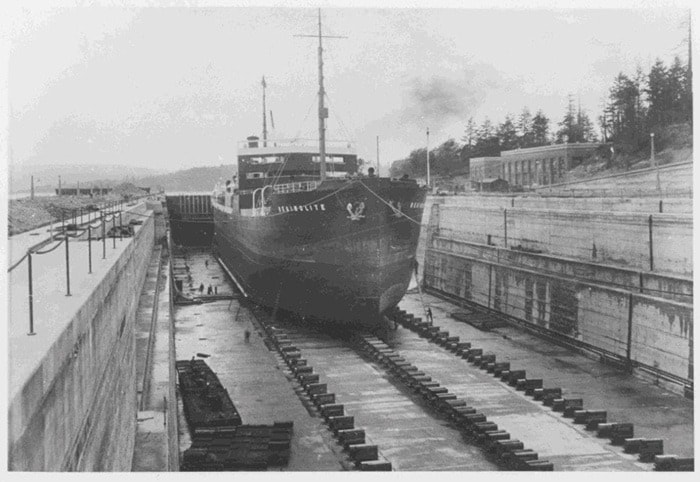By Greg Evans
In 1917, a special meeting of Esquimalt council took place during which a delegation from the Esquimalt Drydock Committee made a presentation.
The committee chair, Arthur McCurdy “laid before council a memorial signed by some 2,000 permanent citizens drawing the attention of the government to the necessity of an immediate start being made on the construction of proposed Esquimalt Graving Dock.”
Citing the importance of the drydock to British Columbia, he encouraged council to lay the petition before the provincial government along with a request for them to recommend the building of the facility to the federal government.
Four years later in 1921, construction commenced at Skinner’s Cove which had a natural rock basin. A description of the site was provided in a 1925 engineering journal which noted that “the site is unique because the entire floor of the dock was on solid rock free from faults and fissures and no extreme thickness of concrete in the floor was necessary.” A large cofferdam in two sections and made up of rock and clay strengthened by steel, was built to surround the area to be used by the drydock.
The general contractors were P. Lyall and Sons Construction of Victoria and Montreal, who completed construction in 1926. Yarrows built the caissons while Hodgson King and Marble Company of Vancouver built the pump house, the transformer house and installed all the electrical and mechanical equipment. The total cost of the work amounted to about $6 million. On July 1, 1927, the drydock was officially opened by James Alexander MacDonald, chief justice of the Court of Appeal. The first ship to enter was S.S. Reginolite, a tanker owned and operated by the Imperial Oil Company Ltd., built by the Collingwood Shipbuilding Co. Ltd. in Ontario.
The net result of this massive undertaking was the largest solid-bottom commercial drydock on the west coast of America. The drydock, which is nearly 1,200 feet in length, is federally owned, maintained and operated and can accommodate vessels of up to 100,000 deadweight tonnage, or about 90 per cent of the world’s ships. From coastal passenger ships and freighters to naval vessels and the huge cruise ships of today, the facility has admirably served the maritime community for 90 years.
